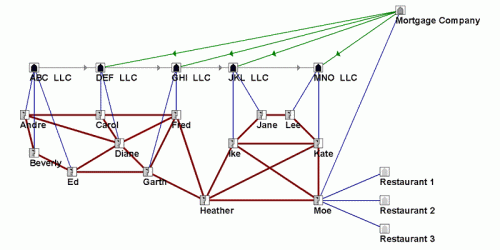A new study shows that owners of run-down apartment buildings are selling them to each other “in a criminal conspiracy to avoid having to do the legally required maintenance necessary to keeping their buildings habitable and safe” (BoingBoing).
A tenant advocate was working with the city to document unsafe living conditions in apartments — things like leaking sewage and lead levels that were causing mental retardation — and get the owners of the buildings to make repairs “But every time documented problems were delivered to the current LLC [Limited Liability Company] owners by city officials,” the report says, “nothing would happen.”
When the city’s deadline approached to fix the violations, the old LLC owner would explain that the property had changed hands and they were no longer involved. The buildings continued to deteriorate as owner after owner avoided addressing the violations.
In fact, the buildings were shifting hands within an extended family. Confirming the connections between the various landlords proved that “…properties exchanged hands not as independent and valid real estate investments but as a conspiracy to avoid fixing the building violations.”
So, it went something like this. The building was passing from one LLC to another:
But all the LLCs were controlled by people connected to one other:
So the family had found a way around the law, “allowing the owners to ‘strip mine’ the equity from the buildings,” while leaving tenants in dangerous conditions.
The authors of the report call this a “common slumlord modus operandi.” You should read the whole thing; it’s pretty stunning.
Lisa Wade, PhD is an Associate Professor at Tulane University. She is the author of American Hookup, a book about college sexual culture; a textbook about gender; and a forthcoming introductory text: Terrible Magnificent Sociology. You can follow her on Twitter and Instagram.















